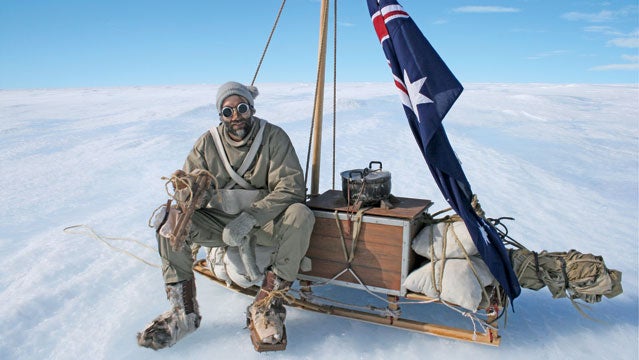In 1916, British explorer , stranded in the Antarctic on remote Elephant Island with his crew from the shipwrecked Endurance, led five men on a desperate crossing of the Southern Ocean in a lifeboat. It took them 17 days to reach South Georgia Island, some 800 miles to the northeast. Then it was another day and a half of nonstop overland trekking across glaciers to reach a whaling station, from which Shackleton would eventually mount a successful rescue of the rest of his crew. Among the greatest survival epics of all time, it’s not the kind of journey anyone would want to repeat. Or so you’d think.
This month, Tim Jarvis, 46, of Australia, and a five-man team will attempt to reenact Shackleton’s legendary save, sailing a replica of his 22.5-foot lifeboat, the James Caird, carrying only sextants and chronometers, wearing period polar garb made of wool and fur, and eating pemmican and biscuits. The expedition is an ambitious bid for historical authenticity that could easily end up getting Jarvis into some very cold water. Like the James Caird, Jarvis’ boat doesn’t have a ballast keel and thus cannot sail into the wind, making passage through the rock-studded inlet where Shackleton made landfall on South Georgia Island all the more treacherous. And while the team is carrying an emergency beacon and will be followed by a motorized support vessel at some distance, there’s no guarantee of rescue if a violent Southern Ocean upends the smaller boat.
“If something happens at night and we’re eight miles from our support vessel, it won’t matter if it’s there or not,” says Jarvis. “For Shackleton it was a journey into the unknown. For us it won’t be that different.”
Jarvis should know. Five years ago, he spent 43 days trekking across Antarctica to re-create the saga of Australian Sir Douglas Mawson, the lone survivor of a three-man geological expedition in 1912. Jarvis went so far as to scrape by on starvation rations to test whether Mawson, who was accused of cannibalism, would have been forced to eat one of his fallen colleagues. His conclusion: the explorer could have made it by consuming his packed food and sled dogs.
Jarvis isn’t the first to try following Shackleton’s heroic path. In 1997, a crew of Irishmen tried to duplicate the James Caird voyage but gave up after capsizing three times in 24 hours. A few years later, mountaineers Conrad Anker, Reinhold Messner, and Stephen Venables retraced Shackleton’s South Georgia Island trek for an Imax film. The 22-mile traverse has since become a high-profile (if rarely taken) trip for adventure-travel outfitters. Veteran Antarctica guide , who has led five groups across the land route, has watched others attempt it in period garb and turn back. “They wisely realized it wasn’t going to work,” Hahn says. “I’ve been in some of the worst weather of my life in that crossing.”
To prepare, Jarvis’ crew trained extensively in ocean survival off the south coast of England, practicing capsize procedures and treading water in heavy woolen clothes. Still, he’s not giving himself great odds of finishing: “I’d say there’s no more than a 50/50 chance on this whole thing.” ��������������


